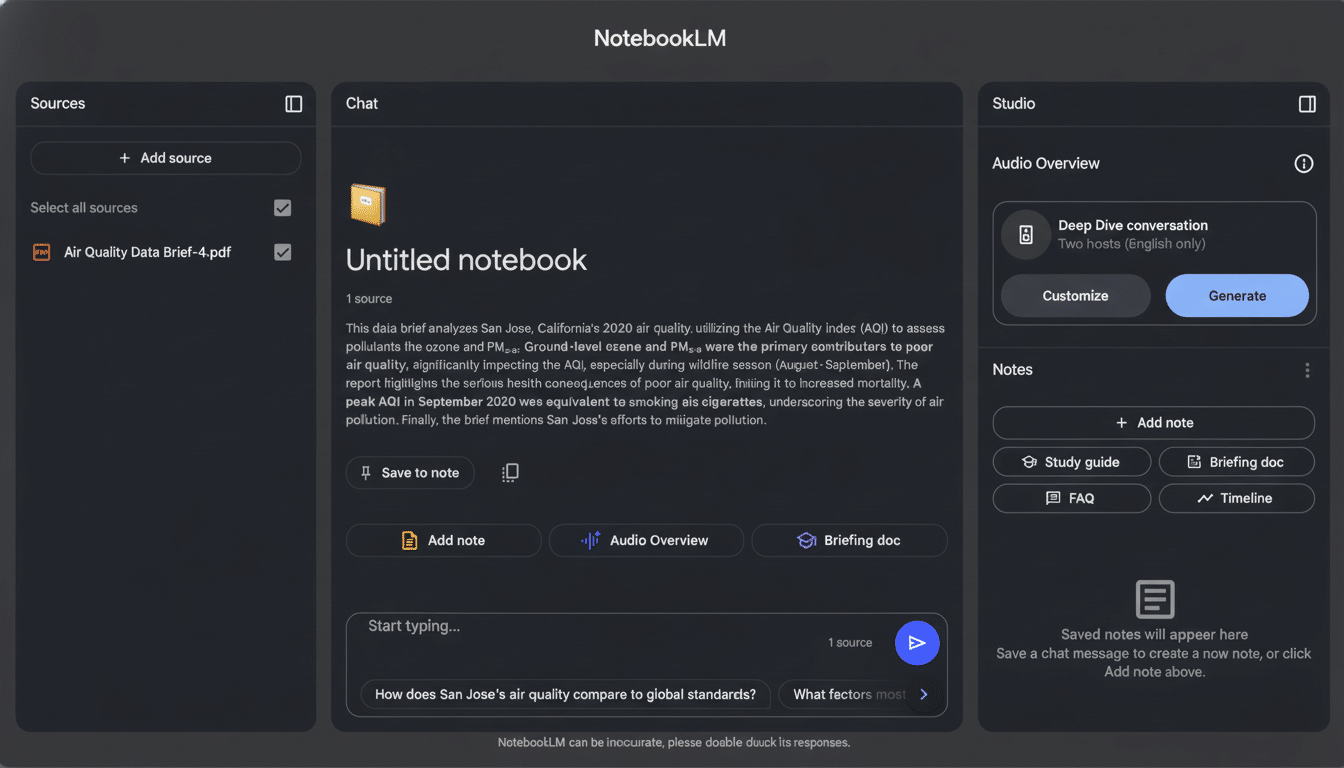Google is launching its Gemini-powered Deep Research into NotebookLM, enabling the app to automatically and instantaneously search through hundreds of sites and return an organized brief with every citation saved to your notebook. The idea is both simple and bold: to automate the first mile of research grunt work, but do so while keeping sources front and center.
With the new research-grade version comes a range of file types that NotebookLM supports now as well as easier imports. You can paste in Google Drive links directly, pull in Google Sheets and PDFs natively, add Microsoft Word documents, and soon upload images like whiteboard photos or handwritten notes.
- What Deep Research Is Actually Doing Under the Hood
- How to Use It and How to Choose Research Modes
- Boosted Imports and Wider Source Coverage in NotebookLM
- Why It Matters for Knowledge Work and Team Productivity
- How It Stacks Up to the Competition in AI Research
- Availability and rollout schedule for Deep Research updates

What Deep Research Is Actually Doing Under the Hood
Deep Research develops a source report by exploring the open web and assessing the accuracy of sources in a summary brief with citations. In NotebookLM, that report is a long way from the finish line. The brief and every web source is just one click away to be added to your notebook so that the AI can refer back to them in Audio Overviews/Video Overviews or chatbot.
The system is also configured for interactive input. If the first pass turns up something off the mark (perhaps it over-indexes news articles rather than peer-reviewed studies), you have a starting point to refine the instructions and regenerate, subsetting by time frame, domain, or document type.
How to Use It and How to Choose Research Modes
To experiment, simply create a new notebook and choose Web as the source, with Deep Research selected. Google frames this mode as the choice for wide, sourced, full-scale briefs. A second mode, Fast Research, is optimized for fast lookups and replaces the old Discover sources experience.
Example: a product manager evaluating the foldable phone space can request a briefing that highlights analyst notes and teardown reviews from the past six months. Deep Research will read hundreds of relevant pages, look for a synthesized summary there, and provide traceable citations so you can audit or expand the findings.
Boosted Imports and Wider Source Coverage in NotebookLM
And NotebookLM now handles Google Drive files similarly to how we handle web links. Throw in a Drive URL, and it imports as a source with no download or reupload required. Native support for Google Sheets and PDFs lets you query tabular data and long-form reports right on the page.
Support for Microsoft Word (.docx) comes included with this update, great for creating internal proposals and briefs. Next comes image uploads, which could facilitate research that leans on photos of lab notes, annotated slides, or snapshots of a whiteboard — useful for teams whose knowledge lives outside of text.

Why It Matters for Knowledge Work and Team Productivity
Information collection is a tax on productivity. According to McKinsey, knowledge workers spend 1.8 hours every day searching for and compiling data. If Deep Research can put together for me a keyed-up first-draft brief and package sources into a notebook I can return to, then that time is freed up for me to spend doing analysis and deciding what the fuck I think.
Evidence for impact is mounting. A Stanford and MIT study discovered a 14% productivity advantage in customer support after AI assistants were implemented, primarily by increasing the speed to resolve related knowledge. The patterns are the same for research workflows: it’s faster, higher-quality synthesis and richer source traceability that are the benefits.
Still, rigor matters. Think of the output brief as just that: a PLACE to start, not stop. Skim the citations, spot-check claims, and add in-house documents or proprietary datasets directly to your notebook for the system to reason over what else you trust. Clear provenance and repeated cues are still the best guardrails against hallucinations.
How It Stacks Up to the Competition in AI Research
Perplexity’s research streams, Anthropic’s projects, and Microsoft’s Copilot with Graph search all pursue the same goal: compressing the time from question to credibly sourced summary. NotebookLM is a persistent, multimodal notebook, mixing web scanning and your own files together before pushing that corpus into chat and auto-generated overviews. It’s the Drive integration as well as the add-to-notebook step that are bringing teams living in Google’s ecosystem.
Availability and rollout schedule for Deep Research updates
Deep Research in NotebookLM and the expanded file support are rolling out now, with access becoming available to all users in the coming days, according to Google. Image uploads to come over the next few weeks. If you are not yet seeing the new options, keep an eye on the Web Source picker for Deep Research and Fast Research as they roll out.
Together, these updates transform NotebookLM from a static storehouse into an active research assistant—one that can scan the open web at scale, ground its summaries with citations, and sandbox those findings until you’re ready to engage in work that actually pushes projects forward.

